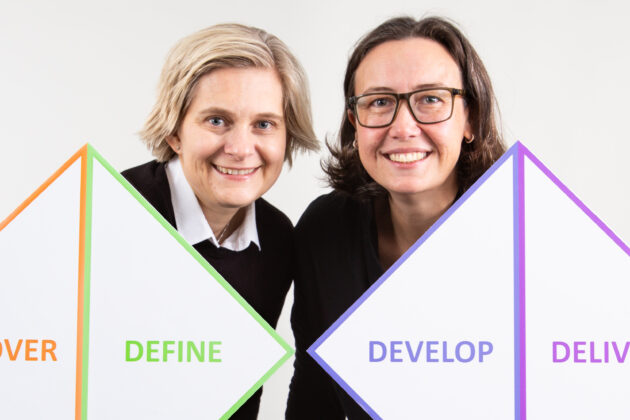New meal concepts using “Design Thinking”

Innovation students develop concepts that can help solve the challenges linked to dietary needs and loss of appetite among the elderly.
Under the expert guidance of Nofima’s Antje Gonera and Stine Alm Hersleth, a group of master’s students in innovation and entrepreneurship at the Norwegian School of Economics and Business NMBU have employed the Design Thinking methodology for a new project.
The students’ mission was to develop tasty, healthy and sustainable meal concepts to cover the daily needs of elderly people who live at home. The new solutions should be simple, easy to prepare and based on Norwegian ingredients, and should address a need among the target group, or break a barrier of some kind.
The students gathered insights and challenged established truths about the kinds of meal concepts which healthy elderly people need and wish for. The elderly want simple, good and social meals.
The students approached elderly people at shopping centres and elderly centres, talked to people in cafés and visited their grandparents. They learned that elderly people want food that is simple to prepare, tasty and healthy – and to have someone to dine with. Some established truths were also challenged. For example, the students realized that many seniors have digital skills and are familiar with using apps.

A new label: Tallerkenmerket
The students presented 11 different concepts before a panel of judges with representatives from Fjordland, Nofima, Nortura and Tine. The winning concept, a new label dubbed “Tallerkenmerket”, emphasized that making good choices at the grocery store should be easy.
The label indicates which food group the product belongs to, and includes scannable code that can be displayed on the product packaging to give you recipe suggestions for nutritious meals containing the ingredient or product in question.
Several of the other concepts which also impressed the judges include:
- “Turvenn” – a social entrepreneurship concept where sharing meals and going for walks is linked to providing jobs for immigrants.
- Communal living concepts where cooking together and social networks are important measures for combatting loneliness and for eating sufficient and nutritious food.
- Healthy, easy to prepare products with improved nutrient content
- Grocery store and food-box delivery concepts that facilitate a healthier daily diet among the elderly.
Discover – Define – Develop – Deliver
These four D’s represent the four stages of Design Thinking. You start by discovering the needs of your target group. Then you define a specific need. Then you develop and test out ideas, concepts and prototypes, and finally you deliver the solution.
Students tested this method in practice over the course of three weeks. “To bring the teaching up to date as much as possible, we linked it to a real-world research project, “Matlyst”, where the goal is to develop solutions to motivate a healthier diet and health at an old age”, says Antje Gonera.
Quick Lessons
“It’s the first time we’re using the Design Thinking method so systematically to focus on experience-based learning, engage with and understand a target group, develop ideas, and screen and test the ideas during an early innovation phase”, says course leader and master’s programme manager Elin Kubberød at NMBU.
She adds that the students reported that linking the teaching to a research project made it more interesting and relevant. The students are also amazed by how much and how fast they learned the methodology and gained insights into the needs of the elderly. And that does not just apply to the students; Stine Alm Hersleth is impressed by how fast the students were able to involve themselves in a complex issue.
“This was a refreshing contribution to the ongoing Matlyst project, and the results were so encouraging that we believe we will arrange similar case studies for other research projects”, concludes Antje Gonera.

Research facts
The research presented is a part of the project Matlyst.
Funded by: The Research Council of Norway and participating companies. Partners: Tine, Fjordland, Norgesmøllene, Nortura, SESAM, Nofima and NMBU

